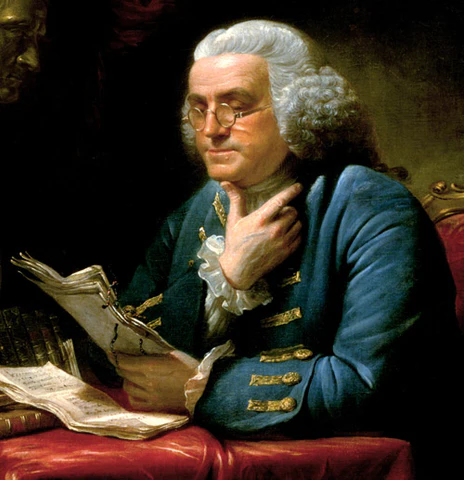
Word of the Day: Wizened
Today’s word of the day, courtesy of Hardeep Kaur’s “81 Old English Words to Enrich Your Vocabulary” (https://propenglish.com/old-english-words-to-enrich-your-vocabulary/), is wizened. Wizened is the past tense or past participle of the verb wizen, which means “to become dry, shrunken, and wrinkled often as a result of aging or of failing vitality” when it is intransitive or “to cause to wizen” when it is transitive (https://www.merriam-webster.com/dictionary/wizened).
According to etymonline.com, we find a version of the word in “Middle English wisenen, from Old English wisnian, weosnian ‘to wither, dry up, waste away,’ from Proto-Germanic *wisnon (source also of Old Norse visna ‘to wither,’ Old High German wesanen ‘to dry up, shrivel, wither;’ German verwesen ‘to decay, rot’)” (https://www.etymonline.com/word/wizen). You might look at the Old English and wonder if wither shares an etymology with wizened since they kind of look and sound similar. But no.
Given the Middle English and Old English spellings, and going back to the Old High German spelling, one might think that wizened has some connection to wise, especially since we often see the word, when we see it, in a phrase such as “a wizened old man.” I suspect that the first time I came across the word I probably thought just that. I cannot recall exactly where I first came across the word, but I suspect it was when I was a youth reading James Fennimore Cooper or something like that. But that was a long time ago, and I have learned a few things since then, like the definition of wizened. Of course, it is also pronounced /ˈwɪz.ənd/, with what we call a short i rather than a long i.
According to On This Day, on this date in 1785, Benjamin Franklin announced his invention of bifocals.
The idea of glasses to help a person see has been around probably much longer than most people think. “The use of a convex lens to form an enlarged/magnified image was most likely described in Ptolemy’s Optics (which survives only in a poor Arabic translation). Ptolemy’s description of lenses was commented upon and improved by Ibn Sahl (10th century) and most notably by Alhazen (Book of Optics, c. 1021). Latin translations of Ptolemy’s Optics and of Alhazen became available in Europe in the 12th century, coinciding with the development of ‘reading stones’” (https://en.wikipedia.org/wiki/Glasses). “Robert Grosseteste’s treatise De iride (On the Rainbow), written between 1220 and 1235, mentions using optics to ‘read the smallest letters at incredible distances’. A few years later in 1262, Roger Bacon is also known to have written on the magnifying properties of lenses. The development of the first eyeglasses took place in northern Italy in the second half of the 13th century” (ibid.).
Over 300 years after the first European manufacture of glasses to correct vision, Johannes Kepler “explained how eyeglass lenses compensate for the distortions that are caused by presbyopia or myopia, so that the image is once again properly focused on the retina” in his treatise entitled Ad Vitellionem paralipomena [Emendations (or Supplement) to Witelo] (1604). Witelo, or Vitello was a friar from Poland. Very little is known about him, but he published a work on perspective that influenced not only Kepler but also Renaissance artists.
Glasses were a wonderful invention. Most people who need glasses have what is called myopia or nearsightedness. Concave lenses alter the way light enters the eye to correct for this. Other people have what is called hyperopia or hypermetropia or farsightedness, and that condition can be corrected by convex lenses. But something happens as we get old. We lose the ability to focus on nearby objects. This age-related farsightedness is called presbyopia.
I have been slightly nearsighted since I was about 15 or 16 years old. But my myopia is not severe at all—I can still pass the driver’s eye test without glasses. For many years, I would grade freshman essays while having something on the television, like a ballgame. But as I approached retirement, I noticed that it was harder and harder to refocus on the paper I was grading after looking up at the TV. I was developing presbyopia. And the solution to this problem was new glasses. I don’t actually have bifocals; I have what is called progressive lenses, lenses which somehow allow my eyes to transition from distance to nearness quite smoothly. As a matter of fact, as I work on this word of the day on May 23, I have a Phillies game on in the background, and I look up occasionally.
Franklin had myopia and later in life developed presbyopia (something that Franklin and I have in common). So he invented glasses that would allow him to read the lips of French speakers when he was at the court in France. He claimed that this was the only way he could understand what they were saying (https://en.wikipedia.org/wiki/Bifocals). It’s a story that seems a little hard to believe; one might think that his purpose was more serious than reading the lips of French people.
But as my father told me many times, Benjamin Franklin was the smartest person in the history of the United States of America. My father’s proof of this statement was the fact that at the very ripe age of just 17 Franklin moved himself from Boston to Philadelphia.
Today’s image is of Benjamin Franklin wearing bifocals while reading (https://ar.inspiredpencil.com/pictures-2023/ben-franklin-wearing-bifocals). Franklin was very smart, and in some ways very wise, but he does not appear wizened.